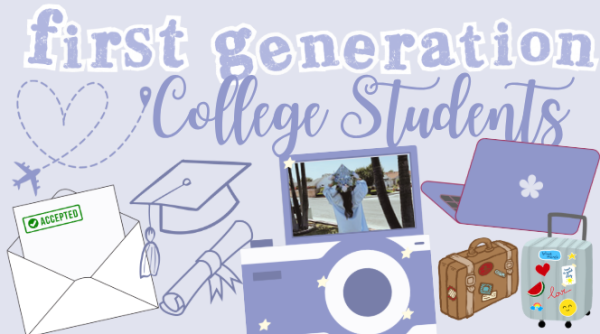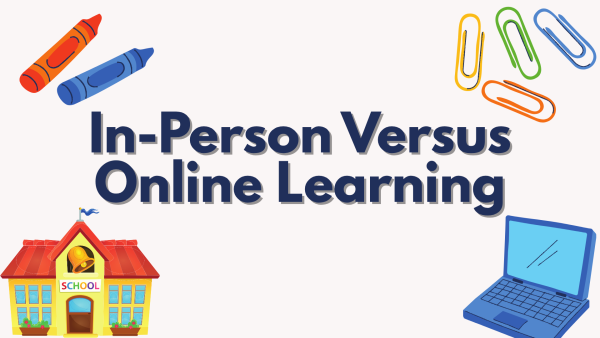College Admissions: Why does it seem so hard to get into college today?
As seniors are getting into the roll of their senior year classes and fall approaches, many are starting to fill out their college applications and make decisions on where they want to go to school. Some students see themselves at their home state schools, whereas others see themselves staying local at community college, and still, people want to move across the country and attend a private university. However, one thing is in common: students all across the board are scared they won’t get into the colleges they see themselves at due to the fact that students with very high-Grade Point Averages (GPAs) and tons of extracurriculars are still getting rejected from many universities.
While the college application process is supposed to be fun and exciting, this year’s seniors are more stressed than ever. Even students in the top 10% of their class feel like they won’t get accepted into many of their choices. Ryan Flory, an Advanced Placement (AP) Student with a 4.46 GPA, says, “UCLA is the highest school I’m applying to, but I don’t think I’ll get in. I’m not even trying for the ivies.”
In terms of GPA, Flory’s is nearly a whole point above the average national cumulative GPA of a high school student, which is about a 3.75 weighted. Flory is a very well-rounded student who says “taking 8 AP courses, working a full-time job, and playing two varsity sports,” yet she still said that she thinks “in comparison to other people, that is nothing. Literally nothing.”
Similarly, when asked if she thought she would get into her dream school, Brooke Spahr, who has a 4.53 GPA, laughed and said, “No, I’m not going to get in.”
In terms of the University of California (UC) Schools, they are not as hard to get into as the Ivy League, but both UCLA and UC Berkeley are very selective, with acceptance rates lower than twenty percent. Although both Spahr and Flory are applying to several UC Schools, Spahr says, “Even the UCs I’m scared I won’t get into.”
Spahr says she feels this way “because so many seniors from last year that were super smart didn’t get into some of the UC schools.” But why are so many students so doubtful they won’t get into good schools, and why are acceptance rates falling?
As society and the public school system puts increasingly high pressure on students to take a multitude of AP classes and get perfect grades, even students with GPAs above 4.0 wonder if they will be able to get into the school of their choice. However, as going to college has become a more mainstream prerequisite for getting a job, the amount of students applying to schools has skyrocketed. As well as this, because most schools decided to go test-optional following the Covid-19 pandemic, students are no longer limited by their SAT and ACT scores and therefore are applying to many more schools than they would have before. For example, selective schools used to have an average median SAT score of applicants admitted, and while this still exists, students no longer have to submit their SAT or ACT scores. Therefore, if their scores are under the school’s average demographic, this does not take away merit from their application. Many see colleges going test-optional as a very positive thing because they view standardized tests as corrupt and an unfair representation of students with higher socioeconomic status.
Many well-off families spend thousands of dollars on SAT tutors, prep classes, and practice tests in order to boost the score of their children. Low and behold, students that spend this time and money preparing for the test are able to spike their scores and look better in a pool of students who did not attend tutoring and preparation classes. This becomes a problem when you realize that students from families with lower socioeconomic status may not have the financial means to buy themselves tutors and special classes, and as a result have lower test scores. While this notion of financially-able families children doing better academically can be seen across the board, the problem is definitely exaggerated in regards to standardized testing.
In addition to this, another reason colleges are seeing increasingly higher application rates is because of the influx of international students applying to US colleges. Following the election of President Biden, Trump’s Covid-19 travel ban was taken away and international students were therefore invited back into the country to study abroad. As a result, colleges are now back on the upward trend of having the highest international student rate in history. Regarding all enrollment of undergraduate colleges in the U.S, 5.9% of students are international, with this number continually increasing with each year. Although this percentage may not seem particularly high, it is a huge leap from the less than 1% of international students in the 1950s. While international students are obviously a good thing for US educational institutions, some argue that these students are taking US citizen spots, especially at top, selective universities where the amount of international students lingers around 20%. The numbers show that the increase in international students not only drives up college application rates but also brings down the amount of US students admitted into universities.
Another aspect of this is the presence of social media and modern society. Today’s students are put under immense pressure to get perfect grades and volunteer, work, and be leaders in their community. You may have heard your parents tell you about how easy their high school career was, how much less mainstream AP and Honors classes were, and how they didn’t have 17 extracurriculars as you do. The notion that students are taking many more difficult classes today than they did just a few decades ago is in fact supported by data. For example, a nationwide study done by the U.S. News and World Report showed that the average public high school female student GPA rose from 2.77 in 1990 to 3.10 in 2009. Similarly, the average public high school male GPA also rose around .3 points in the same given time. Since this data was taken, GPAs have continued to rise. This can be attributed to an increased amount of students enrolling in AP classes each year, adding weight to their grades and making their GPAs even higher. Societal pressure has also encouraged and catalyzed students into taking multiple advanced classes just to keep up with their classmates, causing inflation in rates of students in more difficult classes.
However, GPA is not the only thing colleges look at, and for some colleges, it is just a small aspect among lots of other deciding factors like extracurriculars, essays, volunteer and work experience, and more.
Colleges are still accepting millions of students each year and many students do end up getting into the schools they want to go to. Although it seems like colleges are turning away so many of their applicants, seniors should still apply to their reach schools and are confident in their applications.
Your donation will support the student journalists of Huntington Beach High School. Your contribution will allow us to cover our annual website hosting costs.
Thank you for supporting our program!






